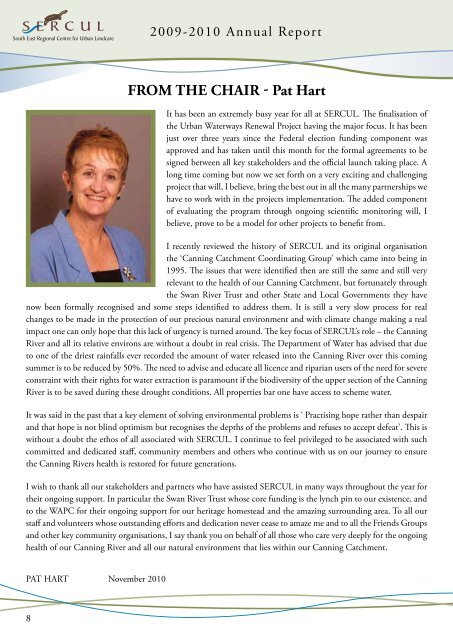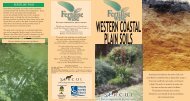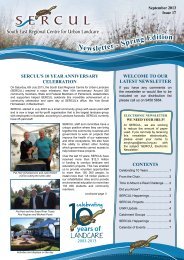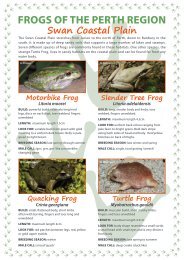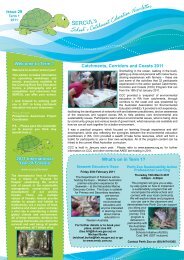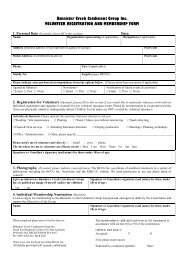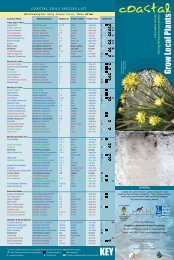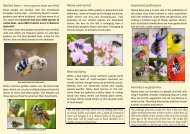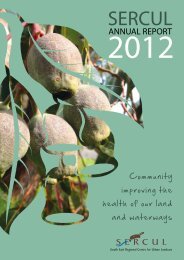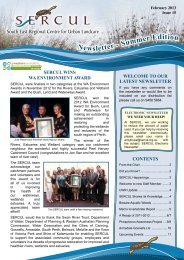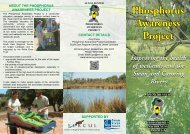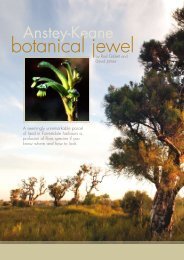2009-2010 Annual Report - SERCUL
2009-2010 Annual Report - SERCUL
2009-2010 Annual Report - SERCUL
- No tags were found...
Create successful ePaper yourself
Turn your PDF publications into a flip-book with our unique Google optimized e-Paper software.
<strong>2009</strong>-<strong>2010</strong> <strong>Annual</strong> <strong>Report</strong>from the chair - Pat HartIt has been an extremely busy year for all at <strong>SERCUL</strong>. The finalisation ofthe Urban Waterways Renewal Project having the major focus. It has beenjust over three years since the Federal election funding component wasapproved and has taken until this month for the formal agreements to besigned between all key stakeholders and the official launch taking place. Along time coming but now we set forth on a very exciting and challengingproject that will, I believe, bring the best out in all the many partnerships wehave to work with in the projects implementation. The added componentof evaluating the program through ongoing scientific monitoring will, Ibelieve, prove to be a model for other projects to benefit from.I recently reviewed the history of <strong>SERCUL</strong> and its original organisationthe ‘Canning Catchment Coordinating Group’ which came into being in1995. The issues that were identified then are still the same and still veryrelevant to the health of our Canning Catchment, but fortunately throughthe Swan River Trust and other State and Local Governments they havenow been formally recognised and some steps identified to address them. It is still a very slow process for realchanges to be made in the protection of our precious natural environment and with climate change making a realimpact one can only hope that this lack of urgency is turned around. The key focus of <strong>SERCUL</strong>’s role – the CanningRiver and all its relative environs are without a doubt in real crisis. The Department of Water has advised that dueto one of the driest rainfalls ever recorded the amount of water released into the Canning River over this comingsummer is to be reduced by 50%. The need to advise and educate all licence and riparian users of the need for severeconstraint with their rights for water extraction is paramount if the biodiversity of the upper section of the CanningRiver is to be saved during these drought conditions. All properties bar one have access to scheme water.It was said in the past that a key element of solving environmental problems is ‘ Practising hope rather than despairand that hope is not blind optimism but recognises the depths of the problems and refuses to accept defeat’. This iswithout a doubt the ethos of all associated with <strong>SERCUL</strong>. I continue to feel privileged to be associated with suchcommitted and dedicated staff, community members and others who continue with us on our journey to ensurethe Canning Rivers health is restored for future generations.I wish to thank all our stakeholders and partners who have assisted <strong>SERCUL</strong> in many ways throughout the year fortheir ongoing support. In particular the Swan River Trust whose core funding is the lynch pin to our existence, andto the WAPC for their ongoing support for our heritage homestead and the amazing surrounding area. To all ourstaff and volunteers whose outstanding efforts and dedication never cease to amaze me and to all the Friends Groupsand other key community organisations, I say thank you on behalf of all those who care very deeply for the ongoinghealth of our Canning River and all our natural environment that lies within our Canning Catchment.PAT HART November <strong>2010</strong>8


